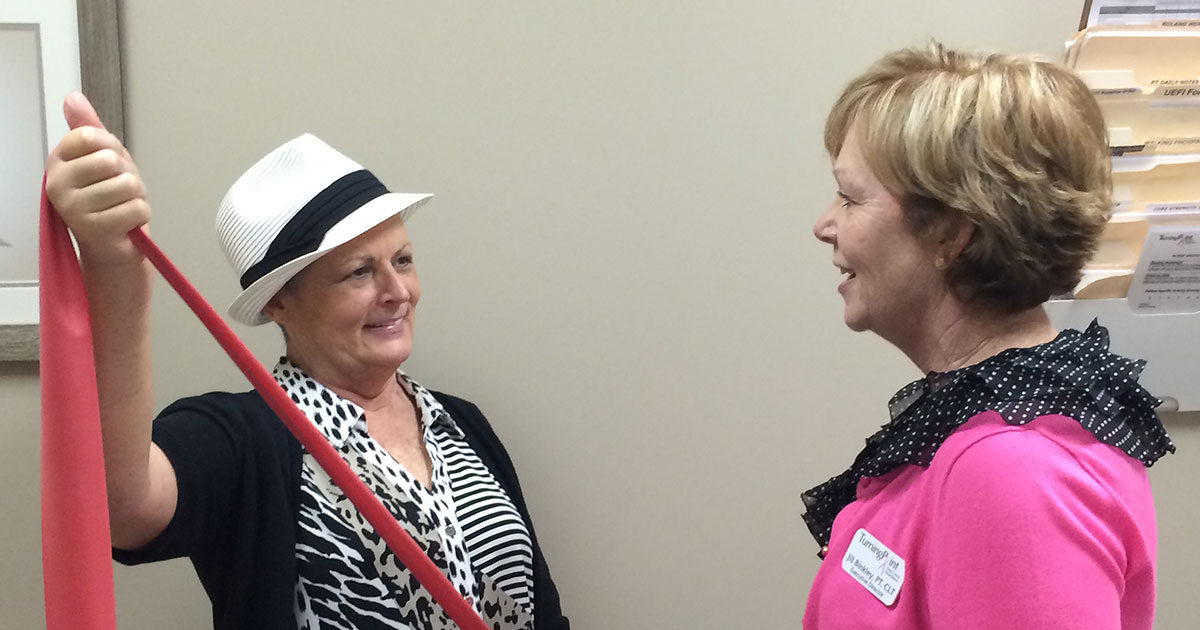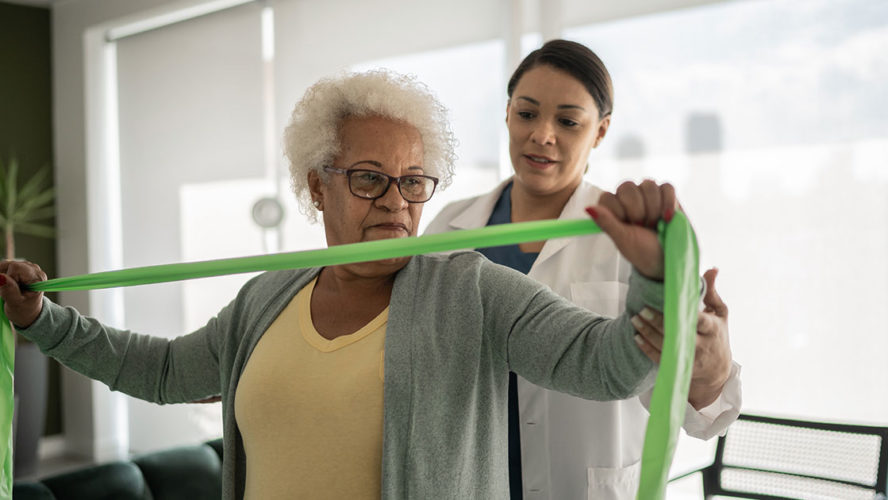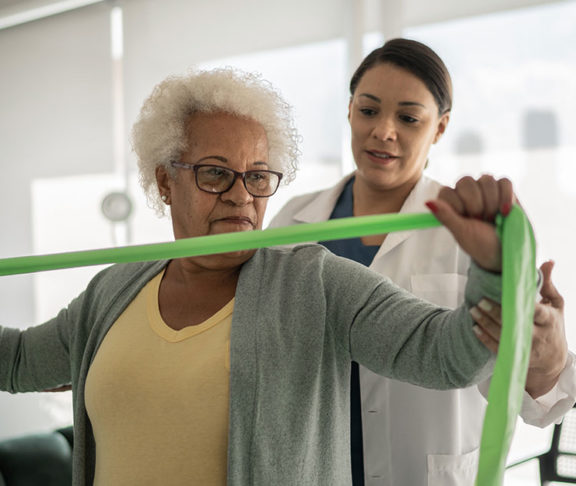Survivorship services critical to a breast cancer patient’s complete recovery include physical therapy, massage therapy, emotional support, nutritional counseling, exercise classes, and educational programs.

Tara Hall
Executive Director, TurningPoint Breast Cancer Rehabilitation
Following diagnosis, subsequent treatments, and any necessary surgeries, a breast cancer patient’s journey faces many unknowns and questions — particularly around the heightened desire to feel like oneself again. There is a passion to return to daily routines and activities such as lifting a child, swinging a tennis racket, or reaching for a glass off a kitchen shelf. Even after recovery, breast cancer can have debilitating effects on a survivor’s endurance,
physical function, and quality of life.
To help breast cancer survivors, studies show that a combination of physical therapy, exercise, and specialized rehabilitation services can aid in regaining strength and mobility, reducing pain and swelling, and improving overall health and well-being.
Creating awareness
Since 2003, the Atlanta-based nonprofit TurningPoint Breast Cancer Rehabilitation has been supporting breast cancer patients of all backgrounds through in-person care and virtually. The vision to launch TurningPoint came from two-time breast cancer survivor and long-time physical therapist Jill Binkley, who saw the void in survivorship care firsthand and wanted to change the narrative and make a difference. She was shocked upon learning that less than 10% of all breast cancer patients are told about the importance of incorporating exercise and rehabilitation into their respective treatment plans.

While the benefits of rehabilitation and exercise programs for breast cancer patients are well-documented, several obstacles make it challenging to administer necessary care. These barriers include a lack of accessible care, minimal awareness of survivorship needs, and insufficient evidence-based clinical practice guidelines to identify and manage the effects of breast cancer and its treatments.
One of TurningPoint’s major objectives is to make referrals to rehabilitation the standard in breast cancer treatments. They are working toward meeting that goal through industry partnerships, improved community and patient education, increased survivorship issues awareness, continual provider education, and a higher number of breast cancer rehabilitation professionals. Through this combination therapy, TurningPoint seeks to bring survivors renewed hope on their road to recovery.

